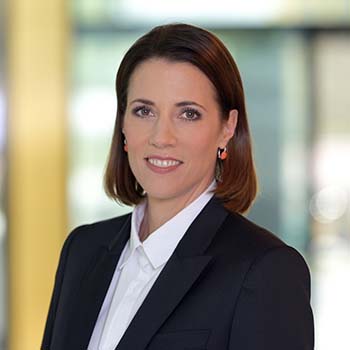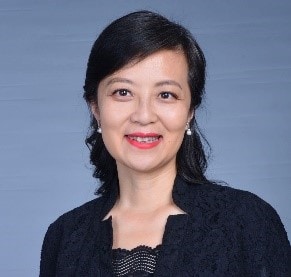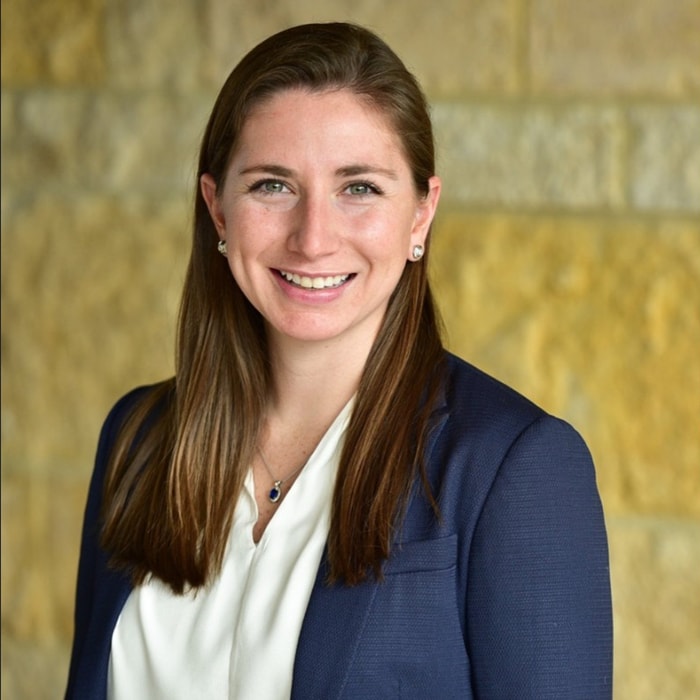
Returning to work in the future of work Embracing purpose, potential, perspective, and possibility during COVID-19
11 minute read
16 May 2020
As the COVID-19 pandemic drives profound societal and organizational shifts, leaders have the opportunity to return to work by designing the future of work, building on the lessons and practices their organizations executed during the crisis.
2021 Global Human Capital Trends
Sign up to receive a copy of our new approach to Trends launching this winter
Hope amid crisis during COVID-19
Little did we know how powerful the foreshadowing was when we wrote in the prologue of this year’s Global Human Capital Trends report: “Much in the same way that we started the decade in uncertainty, we appear to be headed back into a period of uncertainty.” With the rest of the world, we watched in disbelief as the COVID-19 pandemic took hold at the beginning of 2020 and changed life as we knew it. In March, more than a third of humanity was in lockdown.1 By the end of April, 1.6 billion workers stood in immediate danger of having their livelihoods destroyed.2
Learn more
Explore the Human Capital Trends collection
Watch the video
Learn about Deloitte's services
Go straight to smart. Get the Deloitte Insights app
Create a custom PDF
And yet amid the tragedy and uncertainty ran a strong undercurrent of hope. Individuals and communities responded with empathy and strength. Organizations, despite many staring down the barrel of layoffs, furloughs, and shutdowns, took fast action to protect their workers’ health and safety, establish essential services, and deploy workforce strategies to support workers in real time. And ecosystems banded together to leverage their collective and complementary capabilities to effect meaningful change. The social enterprise went to work.
Remaining human in a technology-driven world
The social enterprise, as defined in our 2018 Global human capital trends report, embodies a “new social contract” that proposes a more human-centered rewiring of the relationships between the individual and the organization and the organization and society.3 Since 2018, we have seen the speed and scale of change continue to accelerate, with technological advances bringing bigger and bolder changes in shorter windows of time. But as new technologies and digital transformations dominated conversations in boardrooms, human concerns were considered separate from, if not directly in conflict with, technological advances.
In this year’s report, we challenge organizations to reexamine whether humanity and technology were truly in conflict and to consider how it is possible to resolve the seeming paradox of finding ways to remain distinctly human in a technology-driven world. In each chapter, we show how organizations that embrace a new set of attributes anchored in purpose, potential, and perspective can create lasting value for themselves, their workforce, and society at large.
COVID-19 has reinforced our conviction that human concerns are not separate from technological advances at all, but integral for organizations looking to capture the full value of the technologies they’ve put in place. As organizations looked to adapt their ways of working in response to the crisis, they found that, in many—though not all—parts of the world, technology was not the greatest challenge. In those where it was, the crisis highlighted the digital divide within countries, across regions, and in rural communities and urban digital deserts.4 In those where the technology has been available, one of the biggest barriers was the difficulty of building models to integrate humans with those technologies: to create new habits and management practices for how people adapt, behave, and work in partnership with the technology available to them; to fulfill distinctly human needs such as the desire for meaning, connection, and well-being at work; to maximize worker potential through the cultivation of capabilities; and to safeguard ethical values.
This crisis presents a unique opportunity for organizations that can overcome the instinct of treating humans and machines on parallel paths to instead build connections that can pave a path forward, one that can nurture growth and innovation in the weeks, months, and years to come. It also serves as a window into what can happen if the intersection of humanity and technology and the opportunity to operate as a true social enterprise are not fully embraced. In light of COVID-19, the opportunity (and risk) may never be greater for organizations to transcend this paradox and see possibility in what lies ahead.
Embracing possibility: Returning to work in the future of work
COVID-19 has challenged business leaders to do three things at once: stage the return to work, understand and leverage the advancements they enacted during the crisis, and chart a new path forward. Focusing on the return to work alone is not a viable option, as it will not allow organizations to capitalize on all that they have experienced and learned over the past few months. Instead, we believe organizations should embrace New York Times columnist Thomas Friedman’s perspective that humans who want to adapt in an age of acceleration must develop “dynamic stability.” Rather than trying to stop an inevitable storm of change, Friedman encourages leaders to “build an eye that moves with the storm, draws energy from it, but creates a platform of dynamic stability within it.”5
Leading organizations will do the same. Rather than shrinking from, or preparing to fight, the oncoming storm of change, they draw energy from it. In the context of COVID-19, they will leverage the opportunity to return to work by designing the future of work, employing the lessons, practices, and goodwill they built during their accelerated crisis response. Below, we provide a view on how to start that process by leveraging this year’s human capital trends—a set of reflections, recommendations, and frameworks which we believe are more critical than ever as organizations head toward recovery from the COVID-19 crisis. This is by no means an exhaustive list, but rather a starting point: an opportunity to consciously reflect on what has happened over the past few weeks and months in an effort to embrace the possibility that lies ahead.
New possibilities arising from the COVID-19 crisis
Purpose: An organization that doesn’t just talk about purpose, but embeds meaning into every aspect of work every day
Belonging: From comfort to connection to contribution
The COVID-19 shift: COVID-19 reminded us that people are motivated at the highest levels when they can connect their work contributions to a greater purpose and mission. Consider, for instance, how workers at some consumer products companies have found meaning and inspiration in their jobs as their companies increased production of (or in some cases, pivoted to start developing) disinfectants and sanitizers.6 People want to contribute to their organizations when they understand how their unique talents, strengths, and contributions are making an impact on larger goals.
New possibilities: As they stage the return to work, organizations should seize this opportunity to step back and make sure that they are creating clear connections across individual jobs, team objectives, and the organization’s mission. To strengthen the link between belonging and organizational performance, organizations need to do more than treat their workers fairly and respectfully; they must enable a deeper connection by drawing visible linkages as to how their contributions are making an impact on the organization and society as a whole.
Designing work for well-being: Living and performing at your best
The COVID-19 shift: COVID-19 put well-being front and center for organizations as physical, mental, and financial security became paramount. The pandemic has put more hours into the working day, creating exhaustion and burnout and simultaneously exposing the stress that many workers face in balancing professional and personal demands, as personal commitments and roles (such as being a parent or caregiver) could no longer be separated from work. Many workers are experiencing burnout exacerbated by COVID-19,7 which makes well-being a top priority in any organization’s return-to-work approach.
New possibilities: As they stage the return to work, organizations need to go further than just fostering open dialogue and open practices around well-being. Now is the time to embed well-being into every aspect of the design and delivery of work itself and to fundamentally redesign work toward outputs instead of activities. This will open up the possibility for workers to both live and perform at their best.
The post-generational workforce: From millennials to perennials
The COVID-19 shift: COVID-19 proved that generalizing by age alone can lead to incorrect conclusions. While initially thought to be a virus that only affected the elderly, people soon learned that others were not invulnerable. As the pandemic progressed, researchers honed their investigations based on population attributes that extended beyond age, whether geography, living situation, or prior health conditions, thereby quickly expanding the understanding of the virus at levels previously not understood.
New possibilities: As they stage the return to work, organizations should apply that same lesson to the workforce, using a data-driven approach to better understand workers’ unique attributes, needs, and dimensions and segment their workforce accordingly. If organizations can better understand their workers, they will be able to more effectively develop targeted programs and policies that bring out workers’ personal best while affording them the heath protections they need to safely do their work.
Potential: An organization that is designed and organized to maximize what humans are capable of thinking, creating, and doing in a world of machines
Superteams: Putting AI in the group
The COVID-19 shift: COVID-19 showed people that while technology can augment and supplement work, it does not replace what is needed from humans. The health crisis gave people a greater appreciation for the fact that humans and technology are more powerful together than either can be on their own. Consider how telemedicine, manufacturing, education, and even grocery delivery drew on the power of integrated human-machine teams during the crisis.
New possibilities: As they stage the return to work, organizations have an opportunity to push the envelope in the ways they integrate teams of humans and technology. Organizations should evolve their thinking about technology from taking a purely substitution view (replacing humans with technology) to using technology as an augmentation or collaboration strategy. The latter view can allow organizations to not only streamline costs, but to also create value and ultimately, provide meaning to the workforce as a whole.
Knowledge management: Creating context for a connected world
The COVID-19 shift: People’s hunger for information during the COVID-19 pandemic validated the phrase “knowledge is power.” As individuals around the world clamored for whatever information they could find on virus spread rates, care information, vaccine development, safety measures, business closures, and more, organizations used institutional knowledge to extend their adaptability, as they were able to quickly deploy workers into new roles, or even new organizations, by leveraging the knowledge that was now at their fingertips.
New possibilities: As they stage the return to work, organizations have the opportunity to leverage the power of AI to build a culture of actionable knowledge-sharing and knowledge creation that strengthens organizational connectivity and affords the organization resilience to be able to withstand, and even to thrive in, environments of disruption, uncertainty, and change.
Beyond reskilling: Investing in resilience for uncertain futures
The COVID-19 shift: COVID-19 reinforced that it is more important to understand what workers are capable of doing than understanding what they have done before. Through this crisis, the world has had the opportunity to see the resilience and adaptability of the workforce as workers quickly assumed new roles and even contributed to opportunities in different fields and industries.
New possibilities: As they stage the return to work, organizations should consider how to encourage and offer opportunities for workers to continue to grow and adapt based on their potential, rather than solely on their existing skills or certifications. Now is not the time to pull back on workforce development efforts, but instead to double down on commitments to building a resilient workforce that can adapt in the face of constant change.
Perspective: An organization that encourages and embraces a future orientation, asking not just how to optimize for today, but also how to create value tomorrow
The compensation conundrum: Principles for a more human approach
The COVID-19 shift: COVID-19 showed that compensation is as much an indicator of an organization’s culture and values as it can be an indicator of market value. The pandemic also put a spotlight on pay as it relates to essential work—with some lower-paid jobs proving to be essential in a time of crisis. We’ve already seen compensation-related actions on the front line, such as raising minimum wages for essential workers8 or cutting executive compensation to prioritize keeping people employed.9
New possibilities: As they stage the return to work, organizations should ask themselves what principles serve as the foundation for their compensation philosophy, programs, and policies. When evaluating those principles, the conversation should not be limited to market value, but should also account for human value in the form of purpose, fairness, transparency, growth, and collaboration.
Governing workforce strategies: New questions for better results
The COVID-19 shift: COVID-19 put the need for and ease of access to insightful and future-oriented workforce data in the spotlight. Whether it was data on the capabilities of the workforce, the state of workers’ physical and mental well-being, or an assessment of how well the organization’s culture was faring, we saw a plethora of vendors come out with ways to leverage technology to get the data and insights needed and get it fast.
New possibilities: As they stage the return to work, organizations should take advantage of the power of technology to collect workforce insights by pulling together the key questions that they need to be asking to gain the real-time workforce insights they need. This is the time for organizations to challenge whether they’ve been asking the right questions all along and whether they have the governance and processes in place to enable them to use the data to truly sense what is happening across the organization and workforce.
Ethics and the future of work: From “could we” to “how should we”
The COVID-19 shift: COVID-19 brought ethical issues around employment to the forefront that many may previously have viewed as ivory-tower concerns, putting a spotlight on the impact of organizational decisions on workers’ lives every day. These ethical implications extend to many segments of the workforce, but were particularly evident in the experience of the alternative workforce, some of whom faced decreased demand and related financial concerns, or increased demand and related safety concerns. An April 2020 survey found that 70 percent of gig workers were not satisfied with the support they received from their employers during the pandemic.10
New possibilities: As they stage the return to work, organizations need to ask themselves critical questions to help them prepare for the perceived and actual ethical impacts of business decisions. They should also be monitoring government response, as this too will continue to evolve coming out of the crisis. This consideration is especially important as it relates to organizations’ use and treatment of the alternative workforce, particularly in industries that rely heavily on the gig economy.
A memo to HR: Expand focus and extend influence
The COVID-19 shift: COVID-19 put the spotlight on the CHRO and the HR organization, just as the 2008–2009 recession did for the CFO and finance function. In the past few months, we have seen a greater appreciation for the breadth of what HR does and can do: It has been essential in everything from monitoring workforce sentiment, to establishing connections between organizational leaders, workers, and teams, to integrating well-being into work and reimagining how, where, and what work gets done.
New possibilities: Emerging from this crisis, organizations should ask themselves if HR is positioned to make the impact they can and should be making across the enterprise. HR should take a leading role in helping the organization and the workforce adapt to changing organizational and business requirements. The question organizations must ask themselves is whether HR has a broad enough focus to extend their influence in the areas where they need to play to help position the organization to both recover and thrive over the next decade.
Building a sustainable post-COVID future
During the COVID-19 pandemic, organizations have experienced a burst of acceleration, fast-forwarding into the future of work in ways that stress-tested their ability to blend people and technology in the most dynamic business environment many of us have ever seen. But while moments of crisis can lead to heroic and unprecedented actions, the sustainability of those actions is where the true path towards recovery will begin. That path must be paved not only with good intentions, but with meaningful change. In a post-COVID world, purpose, potential, perspective, and possibility are no longer future-focused aspirations, but the reality of the here and now. Organizations face a choice between returning to a post-COVID world that is simply an enhanced version of yesterday or building one that is a sustainable version of tomorrow. The risk is more than that of falling behind—it’s the possibility of never catching up at all.
© 2021. See Terms of Use for more information.
Explore the collection
-
The postgenerational workforce Article4 years ago
-
Superteams Article4 years ago
-
Knowledge management Article4 years ago
-
Beyond reskilling Article4 years ago
-
Governing workforce strategies Article4 years ago
-
Ethics and the future of work Article4 years ago























